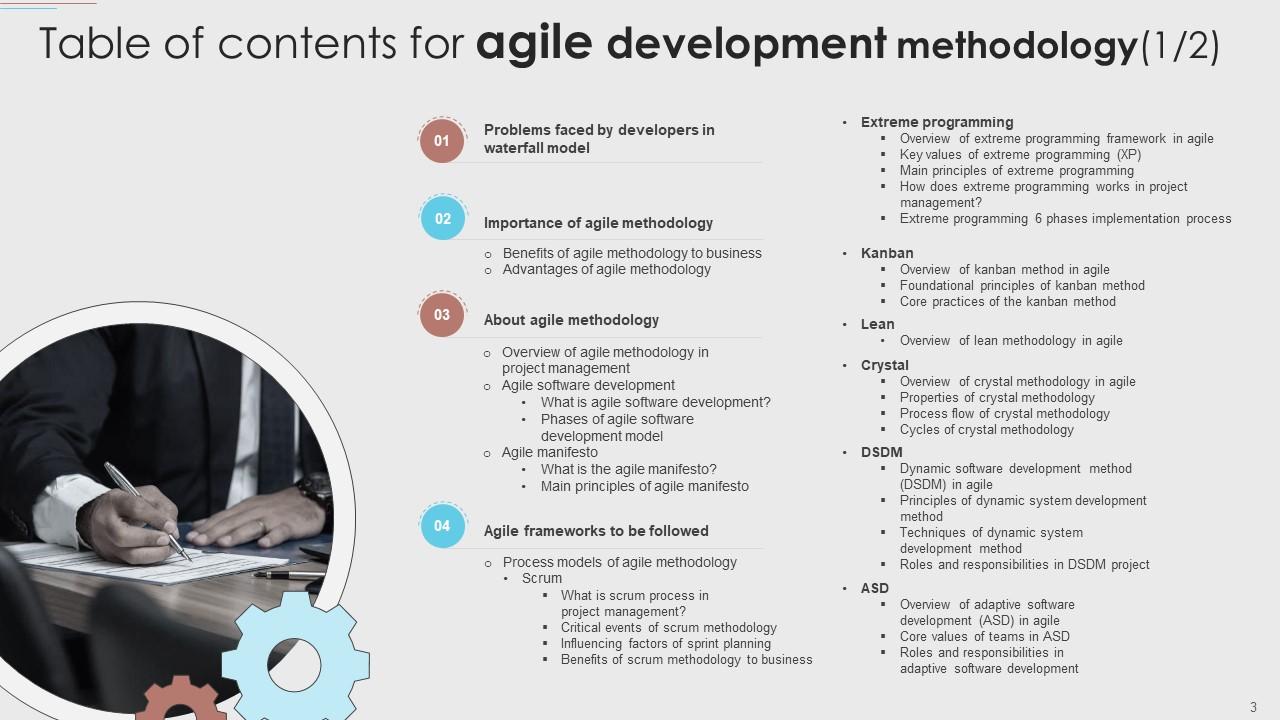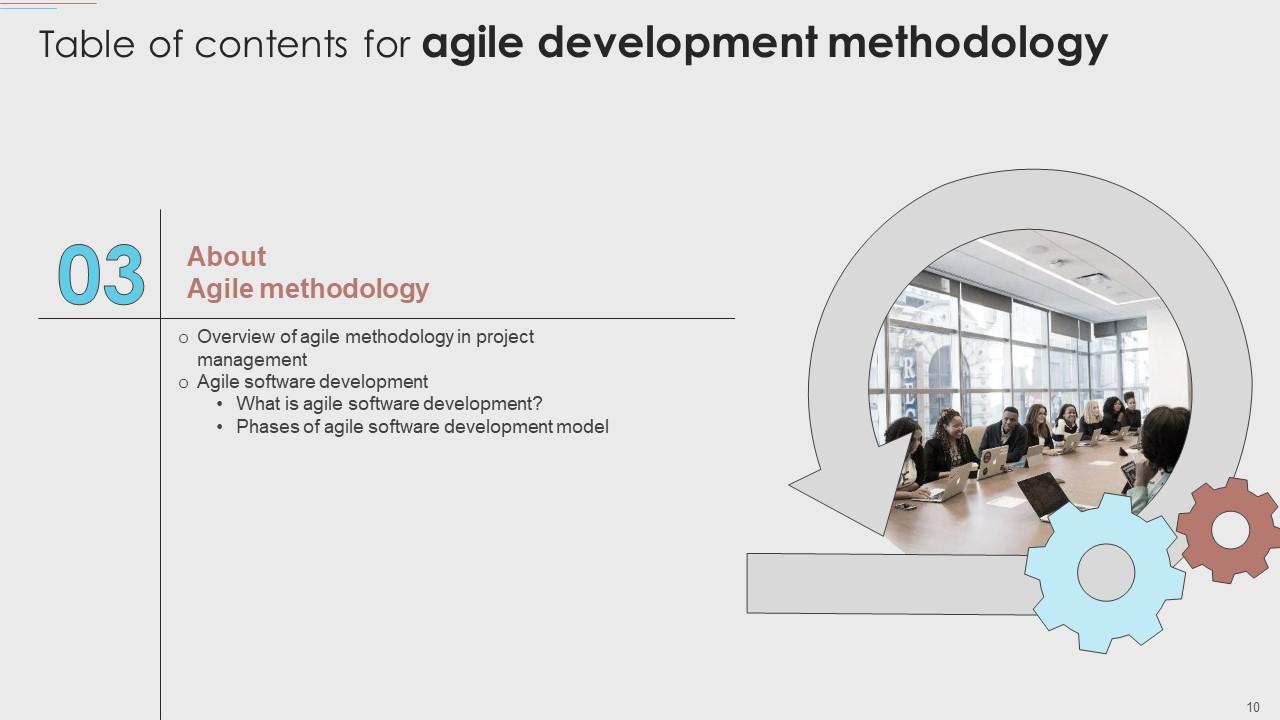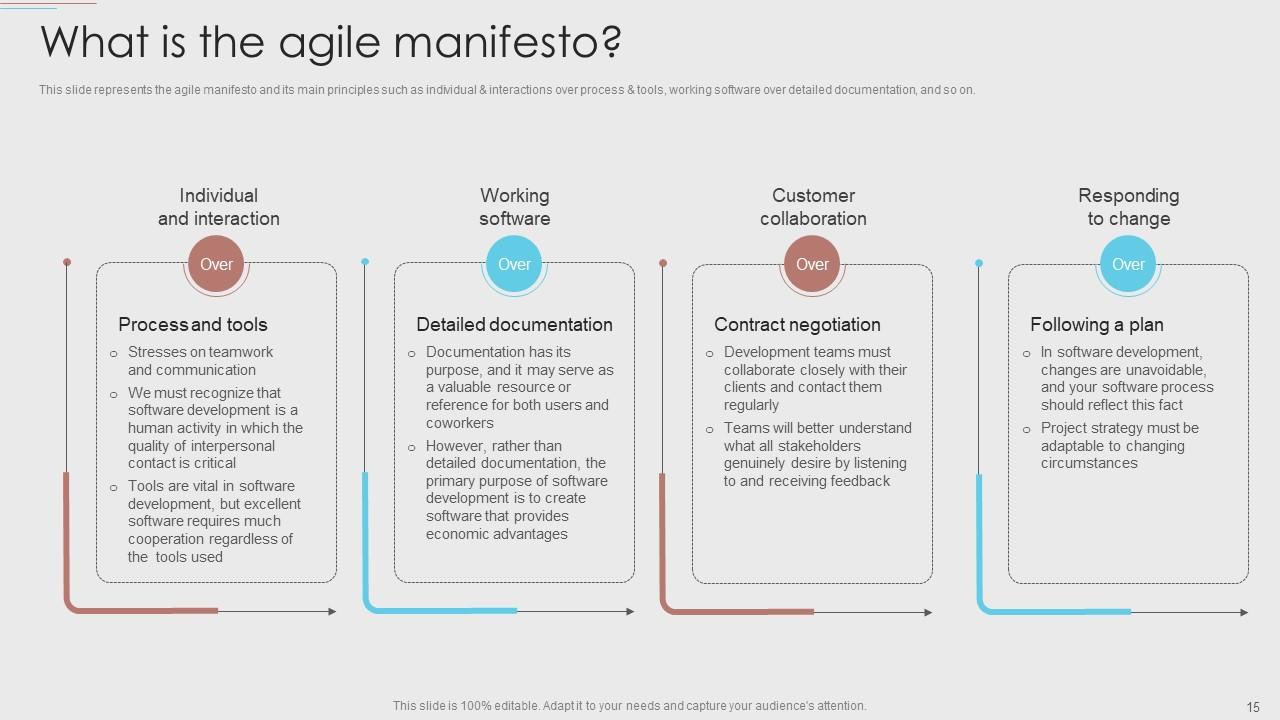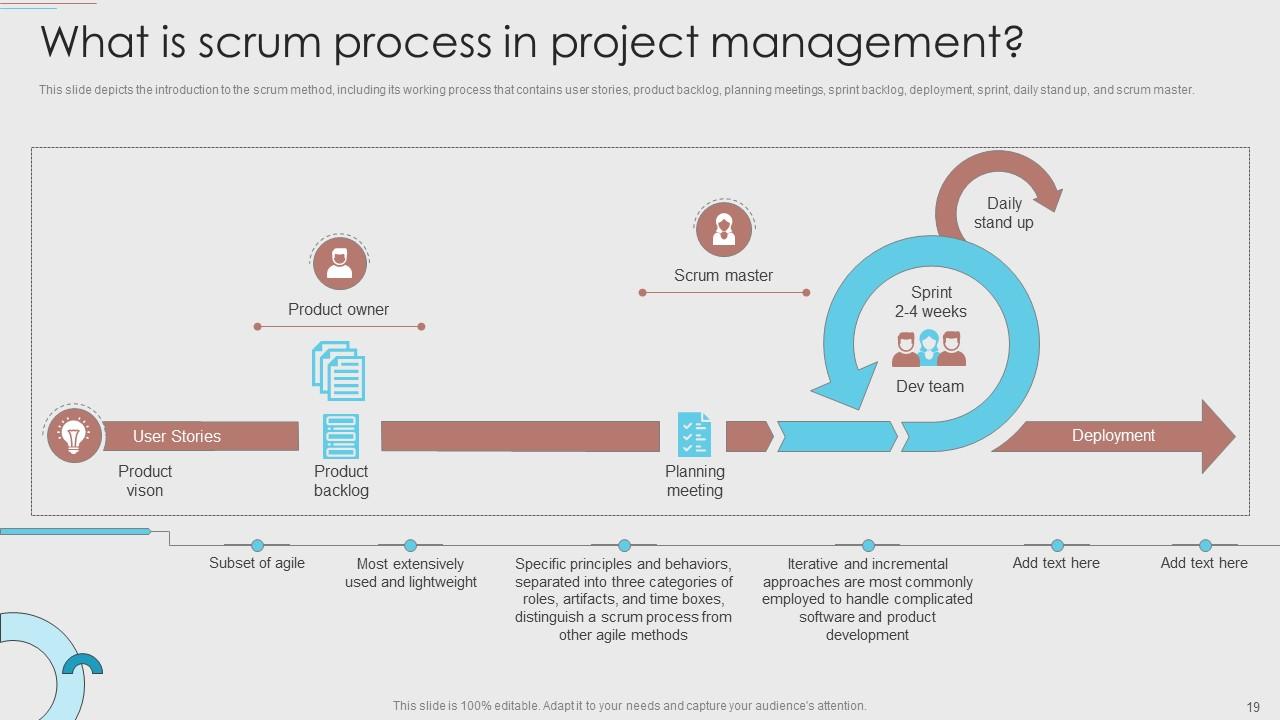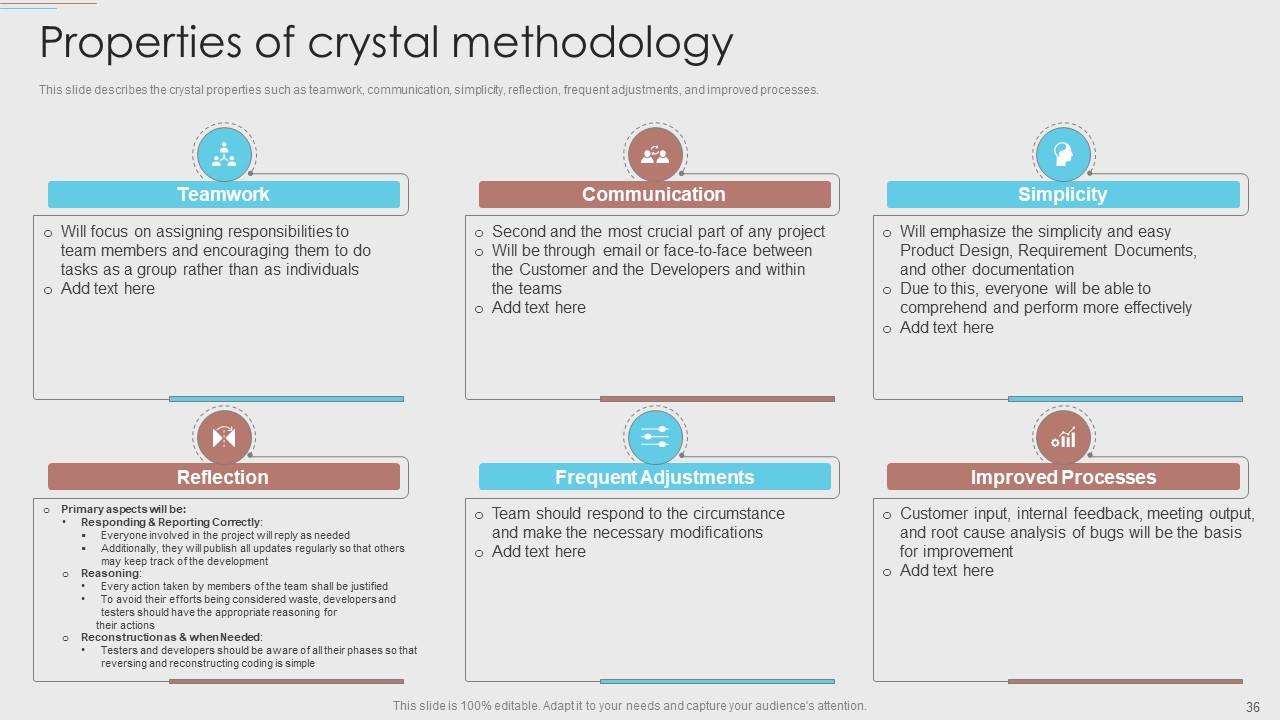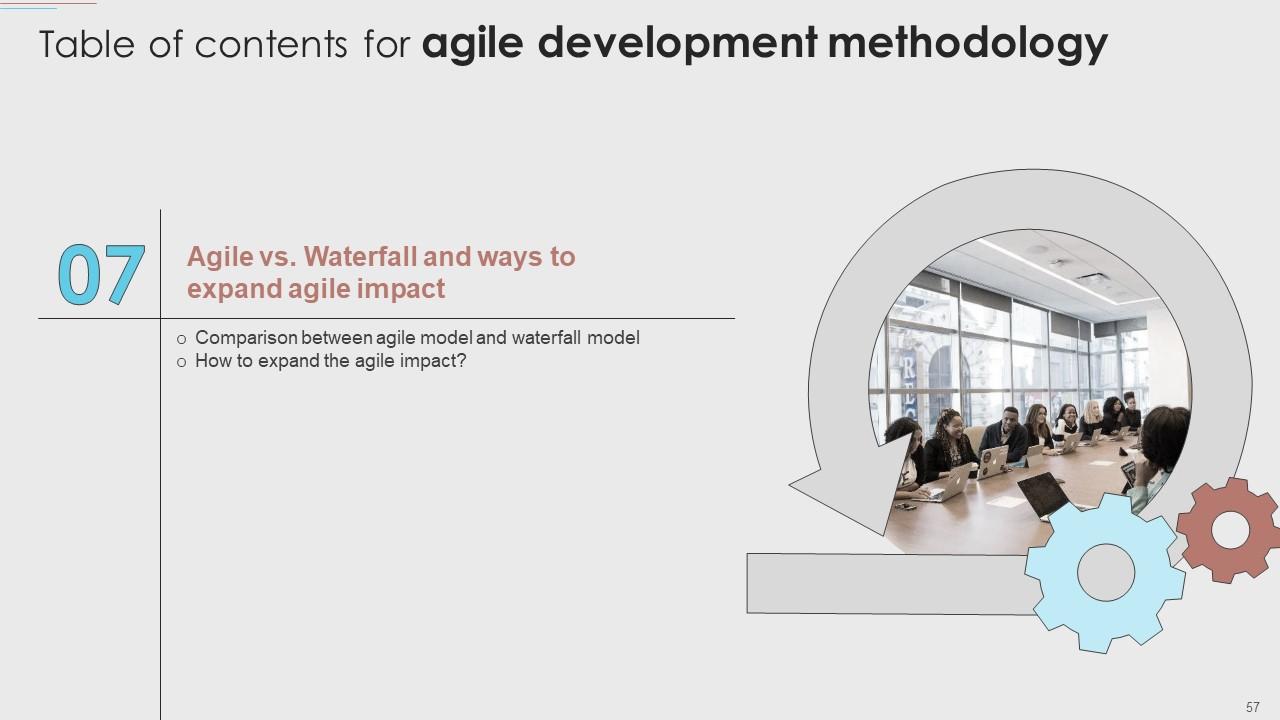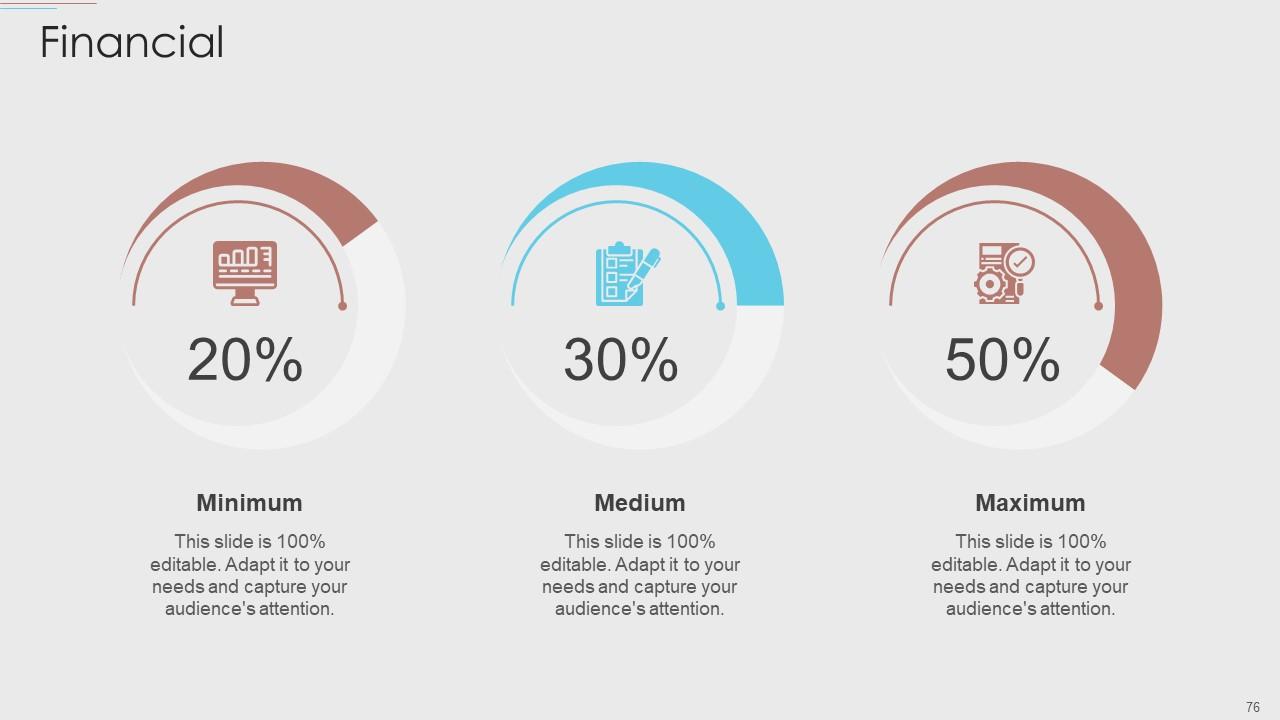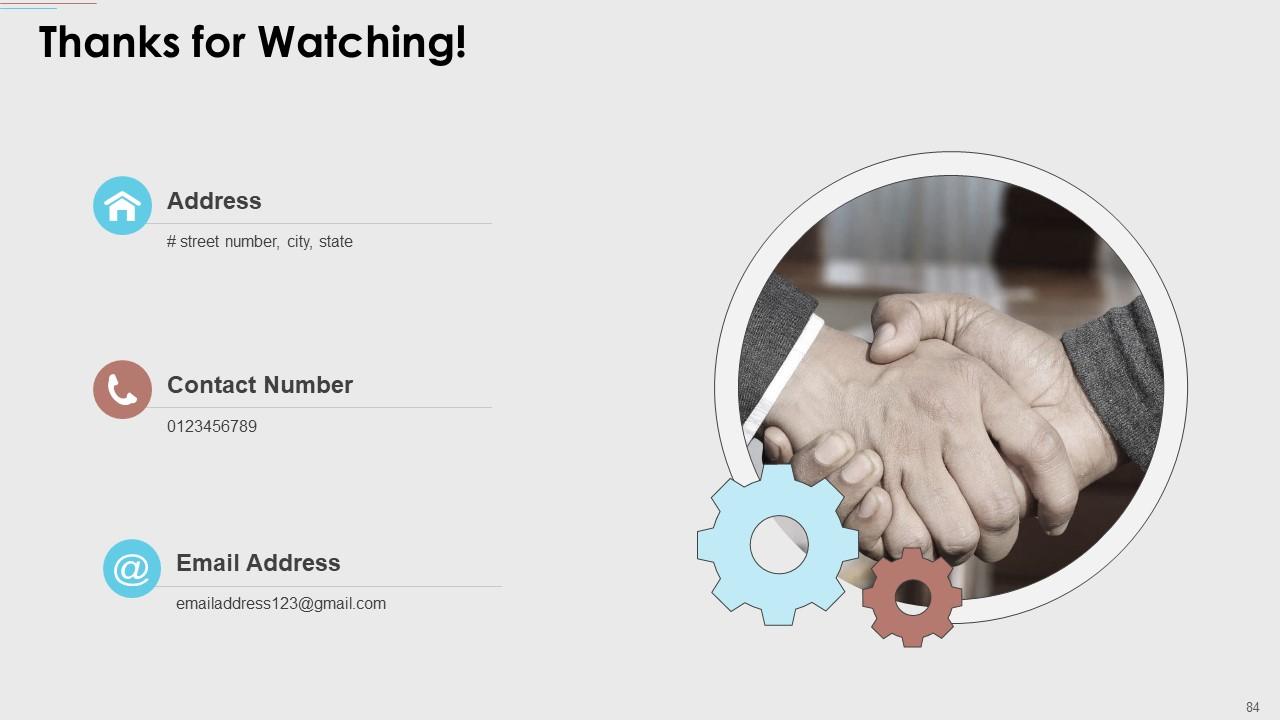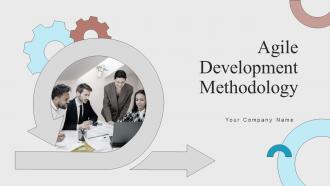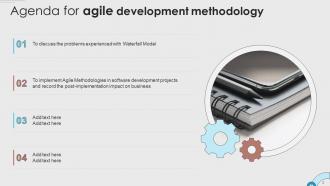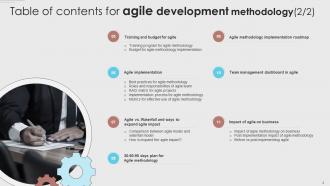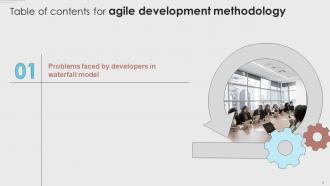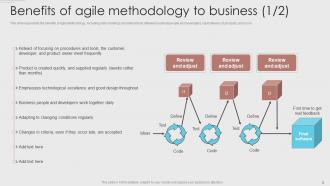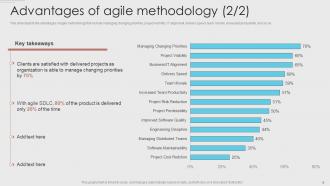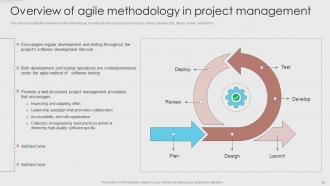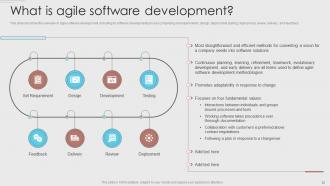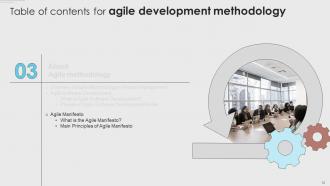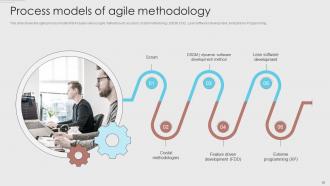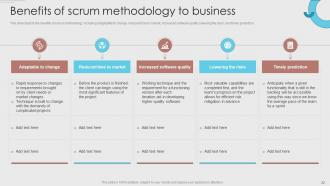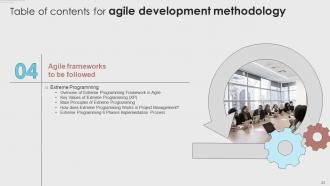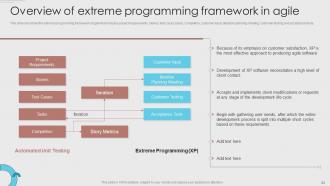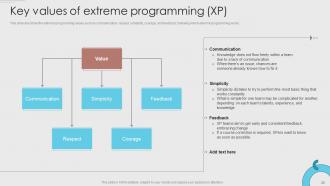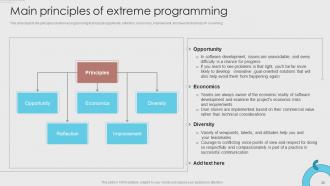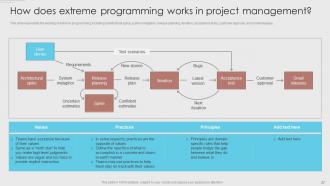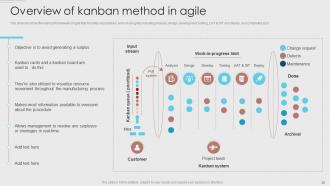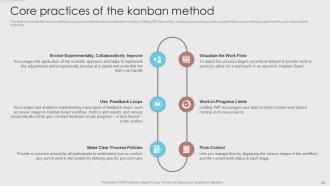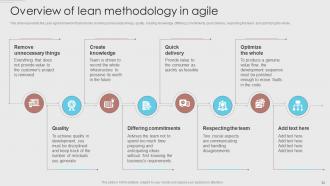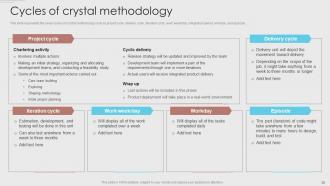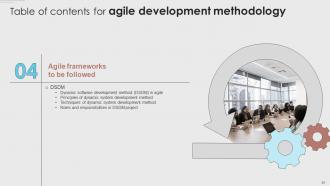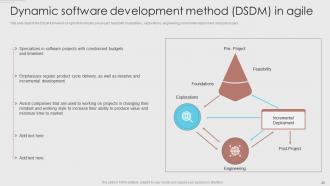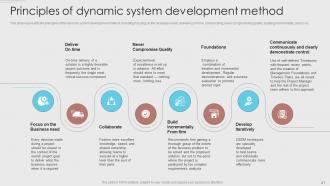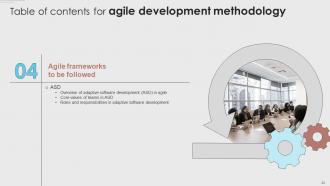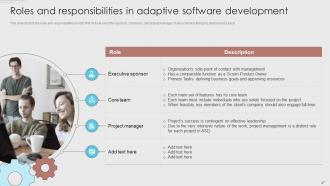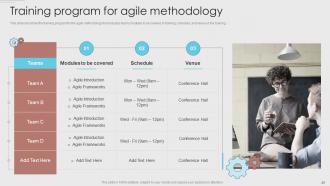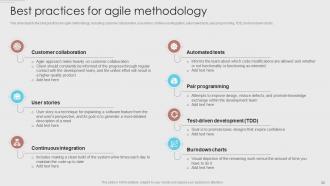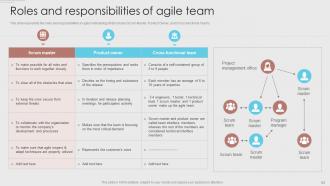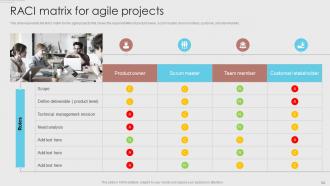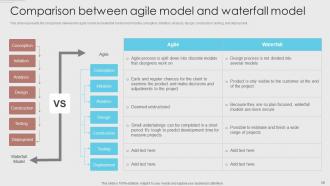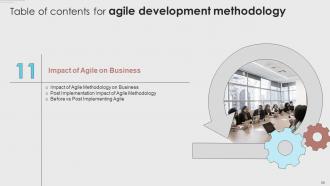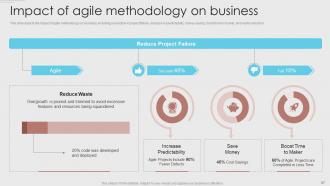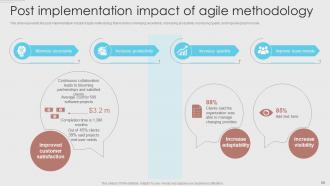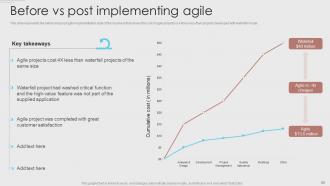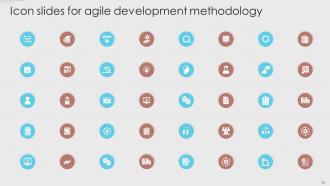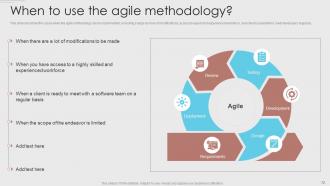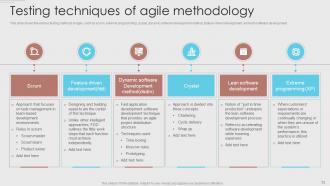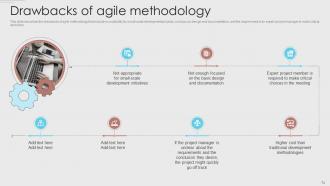Agile Development Methodology Powerpoint Presentation Slides
This PowerPoint presentation gives a brief idea about the problems an organization faces with the Waterfall model and implements Agile Methodology in software development projects. In this Agile Development Methodology PowerPoint Presentation, we have covered the importance of agile methodology, an overview of agile methodology, Agile Software Development, and Agile Manifesto. In addition, this Agile Scrum Methodology PPT contains the various Agile Methodologies Frameworks such as Scrum, Extreme Programming, Kanban, Lean, Crystal, DSDM, and ASD. Also, the Agile Development Methodology PPT presentation includes the training and budget for Agile adoption, the Agile Implementation section that contains Agile best practices, roles, responsibilities, RACI Matrix, the implementation process, and matrices for effective use of Agile. Furthermore, this Software Development Methodologies template caters to a comparison between the Agile and Waterfall model, methods to expand the Agile impact, 30-60-90 days plan, a roadmap, and a dashboard for Agile team management. Lastly, this Agile Methodology deck includes the post-implementation impact of Agile Methodology on business. Get access to this powerful template now.
You must be logged in to download this presentation.
 Impress your
Impress your audience
Editable
of Time
PowerPoint presentation slides
Deliver this complete deck to your team members and other collaborators. Encompassed with stylized slides presenting various concepts, this Agile Development Methodology Powerpoint Presentation Slides is the best tool you can utilize. Personalize its content and graphics to make it unique and thought-provoking. All the eighty four slides are editable and modifiable, so feel free to adjust them to your business setting. The font, color, and other components also come in an editable format making this PPT design the best choice for your next presentation. So, download now.
People who downloaded this PowerPoint presentation also viewed the following :
Content of this Powerpoint Presentation
Slide 1: This slide introduces Agile Development Methodology. State your company name and begin.
Slide 2: This slide states Agenda of the presentation.
Slide 3: This slide presents Table of Content for the presentation.
Slide 4: This is another slide continuing Table of Content for the presentation.
Slide 5: This slide highlights title for topics that are to be covered next in the template.
Slide 6: This slide displays Problems Faced by Developers in Waterfall Model.
Slide 7: This slide highlights title for topics that are to be covered next in the template.
Slide 8: This slide displays Benefits of Agile Methodology to Business.
Slide 9: This slide depicts the advantages of agile methodology that include managing changing priorities, project visibility, etc.
Slide 10: This slide highlights title for topics that are to be covered next in the template.
Slide 11: This slide represents Overview of Agile Methodology in Project Management.
Slide 12: This slide describes the overview of agile software development.
Slide 13: This slide showcases Phases of Agile Software Development Model.
Slide 14: This slide highlights title for topics that are to be covered next in the template.
Slide 15: This slide represents the agile manifesto and its main principles such as individual & interactions.
Slide 16: This slide depicts the agile manifesto principles that includes customer satisfaction, welcome changes, frequently deliver, etc.
Slide 17: This slide highlights title for topics that are to be covered next in the template.
Slide 18: This slide shows the agile process models that includes various agile methods such as scrum, crystal methodology, DSDM, etc.
Slide 19: This slide depicts the introduction to the scrum method, including its working process.
Slide 20: This slide represents Critical Events of Scrum Methodology.
Slide 21: This slide showcases the factors that influence the sprint planning.
Slide 22: This slide shows Benefits of Scrum Methodology to Business.
Slide 23: This slide highlights title for topics that are to be covered next in the template.
Slide 24: This slide presents Overview of Extreme Programming Framework in Agile.
Slide 25: This slide describes the extreme programming values such as communication, respect, simplicity, etc.
Slide 26: This slide depicts the principles of extreme programming that include opportunity, reflection, economics, etc.
Slide 27: This slide represents the working of extreme programming, including architectural spike, system metaphor, etc.
Slide 28: This slide showcases Extreme Programming 6 Phases Implementation Process.
Slide 29: This slide highlights title for topics that are to be covered next in the template.
Slide 30: This slide describes the Kanban framework of agile that includes input stream.
Slide 31: This slide depicts the foundational principles of the Kanban method.
Slide 32: This slide showcases Core Practices of the Kanban Method.
Slide 33: This slide highlights title for topics that are to be covered next in the template.
Slide 34: This slide represents the Lean agile framework that includes removing unnecessary things.
Slide 35: This slide presents Overview of Crystal Methodology in Agile.
Slide 36: This slide describes the crystal properties such as teamwork, communication, simplicity, etc.
Slide 37: This slide depicts the crystal methodology process flow, including its various phases such as episode, delivery, days, etc.
Slide 38: This slide represents the seven cycles of crystal methodology such as project cycle, delivery cycle, iteration cycle, etc.
Slide 39: This slide highlights title for topics that are to be covered next in the template.
Slide 40: This slide showcases Dynamic Software Development Method (DSDM) in Agile.
Slide 41: This slide shows Principles of Dynamic System Development Method.
Slide 42: This slide shows Techniques of Dynamic System Development Method.
Slide 43: This slide presents Roles and Responsibilities in DSDM Project.
Slide 44: This slide highlights title for topics that are to be covered next in the template.
Slide 45: This slide displays Overview of Adaptive Software Development (ASD) in Agile.
Slide 46: This slide represents the core values of ASD, and it includes mutual trust, mutual respect, mutual participation, etc.
Slide 47: This slide showcases Roles and Responsibilities in Adaptive Software Development.
Slide 48: This slide highlights title for topics that are to be covered next in the template.
Slide 49: This slide describes the training program for the agile methodology that includes teams modules to be covered.
Slide 50: This slide represents the budget for agile projects, including project cost summary, amount, and project details.
Slide 51: This slide highlights title for topics that are to be covered next in the template.
Slide 52: This slide showcases Agile approach relies heavily on customer collaboration.
Slide 53: This slide represents the roles and responsibilities in agile methodology.
Slide 54: This slide presents RACI matrix for the agile projects that shows the responsibilities of product owner.
Slide 55: This slide displays Implementation Process for Agile Methodology.
Slide 56: This slide represents Metrics for Effective Use of Agile Methodology.
Slide 57: This slide highlights title for topics that are to be covered next in the template.
Slide 58: This slide shows Comparison between Agile Model and Waterfall Model.
Slide 59: This slide represents how to expand the impact of agile and it includes three factors such as learning organization, clear goals, and trusting environment.
Slide 60: This slide highlights title for topics that are to be covered next in the template.
Slide 61: This slide showcases 30-60-90 Days Plan for Agile Methodology.
Slide 62: This slide highlights title for topics that are to be covered next in the template.
Slide 63: This slide displays Agile Methodology Implementation Roadmap.
Slide 64: This slide highlights title for topics that are to be covered next in the template.
Slide 65: This slide represents the team management dashboard in agile by covering the details of total resources.
Slide 66: This slide highlights title for topics that are to be covered next in the template.
Slide 67: This slide depicts the impact of agile methodology on business.
Slide 68: This slide showcases Post Implementation Impact of Agile Methodology.
Slide 69: This slide represents the before and post agile implementation state of the business.
Slide 70: This slide contains all the icons used in this presentation.
Slide 71: This slide is titled as Additional Slides for moving forward.
Slide 72: This slide describes the cases when the agile methodology can be implemented.
Slide 73: This slide shows the various testing methods of agile, such as scrum, extreme programming, crystal, etc.
Slide 74: This slide describes the drawbacks of agile methodology that include no suitability for small-scale development projects.
Slide 75: This is About Us slide to show company specifications etc.
Slide 76: This is a Financial slide. Show your finance related stuff here.
Slide 77: This slide presents Bar chart with two products comparison.
Slide 78: This slide displays Mind Map with related imagery.
Slide 79: This slide shows Post It Notes. Post your important notes here.
Slide 80: This slide depicts Venn diagram with text boxes.
Slide 81: This slide contains Puzzle with related icons and text.
Slide 82: This is a Timeline slide. Show data related to time intervals here.
Slide 83: This is Our Target slide. State your targets here.
Slide 84: This is a Thank You slide with address, contact numbers and email address.
Agile Development Methodology Powerpoint Presentation Slides with all 89 slides:
Use our Agile Development Methodology Powerpoint Presentation Slides to effectively help you save your valuable time. They are readymade to fit into any presentation structure.
FAQs
The advantages of Agile methodology include managing changing priorities, project visibility, frequent delivery of working software, customer satisfaction, welcome changes, and improved quality.
Scrum is an Agile methodology that emphasizes teamwork, frequent delivery, and continuous improvement. It involves a self-organizing team, a product backlog, and iterative development cycles known as sprints.
The core practices of the Kanban method include visualizing the workflow, limiting work in progress, managing flow, making process policies explicit, implementing feedback loops, and improving collaboratively and evolving experimentally.
An Agile model is an iterative approach to software development that involves working in short development cycles, while the Waterfall model is a linear approach to software development that involves completing each phase before moving to the next.
Agile methodology can be implemented by forming a cross-functional team, defining the product backlog, conducting sprint planning, implementing the sprint cycle, and continuously improving through retrospective meetings.
-
The customer care of SlideTeam is very responsive. I was having a payment issue and they fixed it for me in no time.
-
It is my first time working with them and that too on a friend's recommendation. I would say, I am not expecting such a worldly service at this low price.





